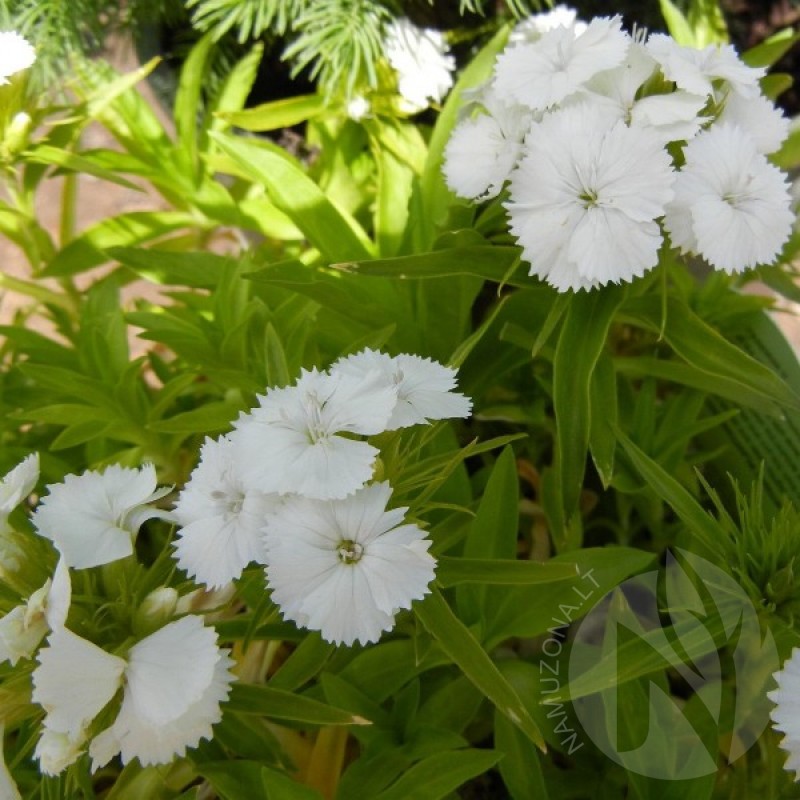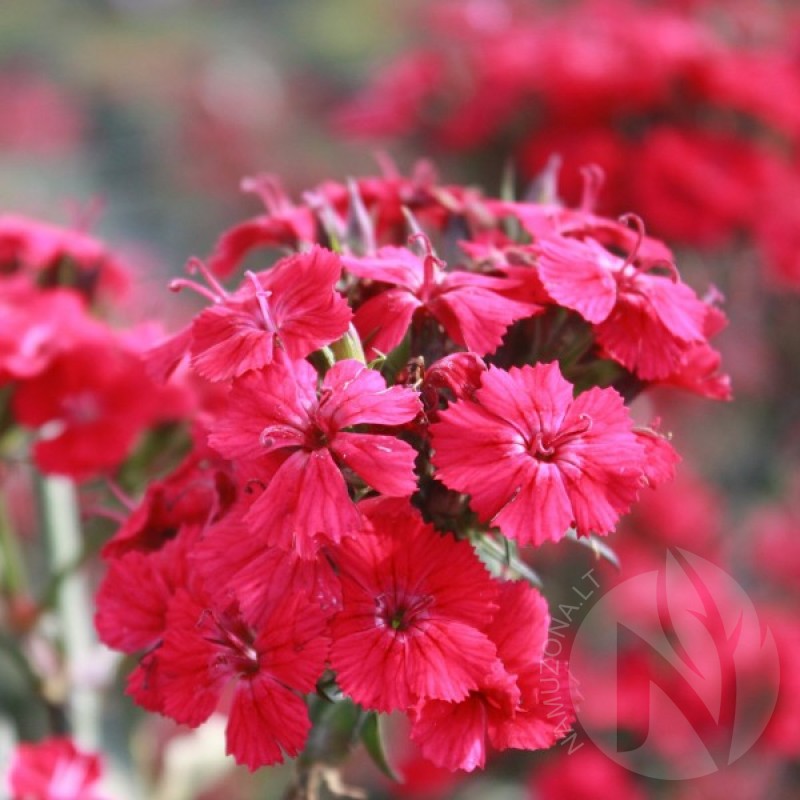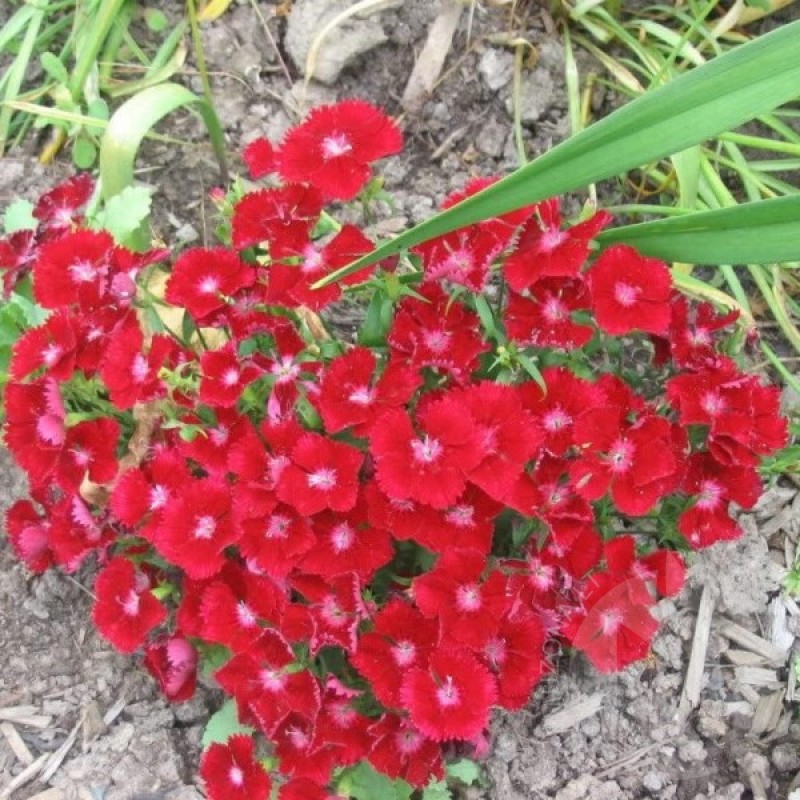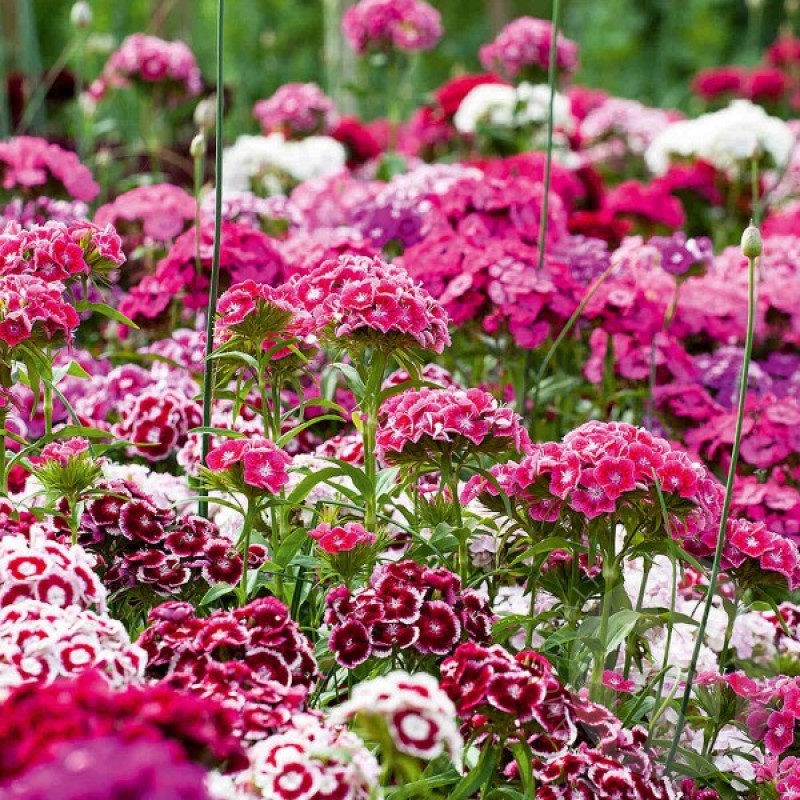


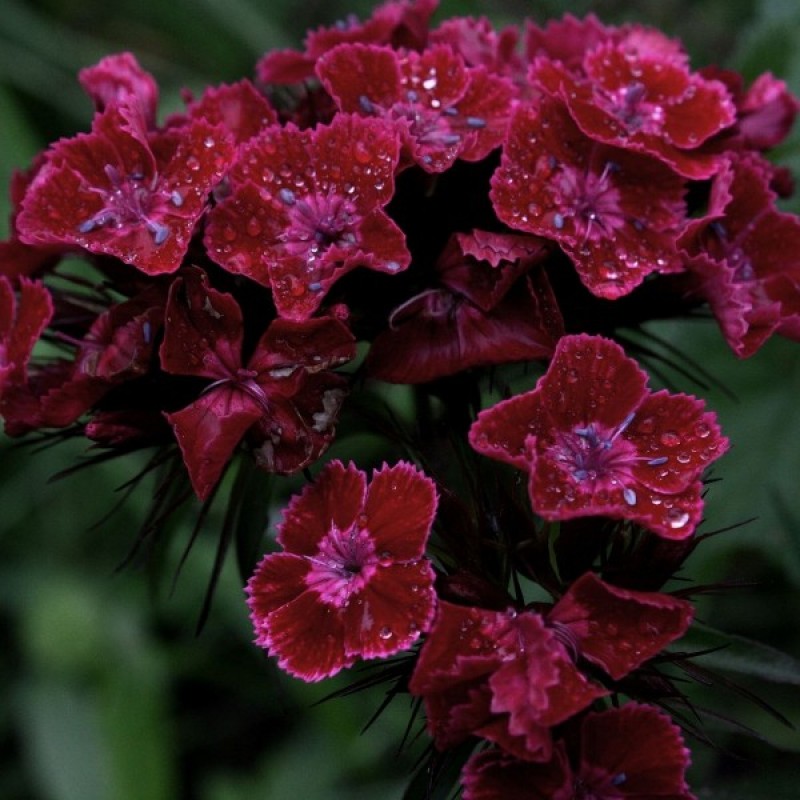


PAY ATTENTION!
All seeds (except SOLD OUT) are available for immediate shipping and will be dispatched within 1-2 business days.
INFORMATION NEEDED? PLEASE CONTACT US NOW!
Popular biennial plant for bedding and cutting. Long lasting cut flowers!
This Sweet William grows up to 50 cm tall and features dark purple flowers held in dense, flat-topped terminal clusters.
Blooms from June to August.
Lance-shaped medium green leaves.
Sweet William is best grown in deep, organically rich, well-drained soils in full sun, but generally appreciates some light afternoon shade in hot summer climates.
In optimum growing conditions it will reseed each year and remain in the garden for many years as if it were a long-lived perennial. Double-flowered forms will not come true from seed, however. Prompt deadheading of spent flowers (shear back large plantings) promotes perennial tendencies.
Seed may be planted directly in the garden in late spring for bloom the following year.
Information source: www.missouribotanicalgarden.org.
Approximately 200 seeds in 0.5g packet.
Genus - Dianthus
Species - Barbatus
Variety - Black Magic
Common name - Sweet William
Pre-Treatment - Not-required
Hardiness zones - 3 - 9
Height - 0,505 m
Spread - 0,30 m
Plant type - Biennial
Exposure - Full Sun
Growth rate - Medium
Soil PH - Neutral, Alkaline
Soil type - Fertile chalky Clay, Loam, Well Drained
Water requirements - Average Water
Landscape uses - Beds and borders. Containers. Cutting
Bloom season - June - August
Leaf / Flower color - Green / Dark Purple
GERMINATION INSTRUCTIONS
1. Bury the seeds under 4-5 mm of commercial seed planting medium or a mix of equal parts of perlite and peat moss in a shallow tray 5-7 cm deep. Start the seeds in the early spring about 6 weeks before the last frost in your area - from March to June. Sow outside in June.
2. Water the container from the bottom by setting it into a sink filled with about 1 inch of water for about 10 minutes. Lift, drain slightly until the water stops dripping and place the container in a sunny window.
3. Cover the whole container with a clear plastic bag that will let the light in but keep the soil moist. Remove it after about 10 days when the seeds start sprouting.
4. Water the seedlings every few days so that the soil stays moist. Add 1 tsp. of general liquid plant fertilizer to a gallon of water and fertilize the seedlings once a week after they are about 10 days old.
5. Transplant the dianthus seedlings outside in the spring, keeping the soil around their roots by sliding a spoon under them and lifting them from the container.
6. Set the seedlings into holes deep enough to hold the roots and keep the plant at the same planting depth. Gently press the soil so that it is firm around the stem and continue the watering and fertilizing schedule.
Info source: eHow.com
No questions about this product.

